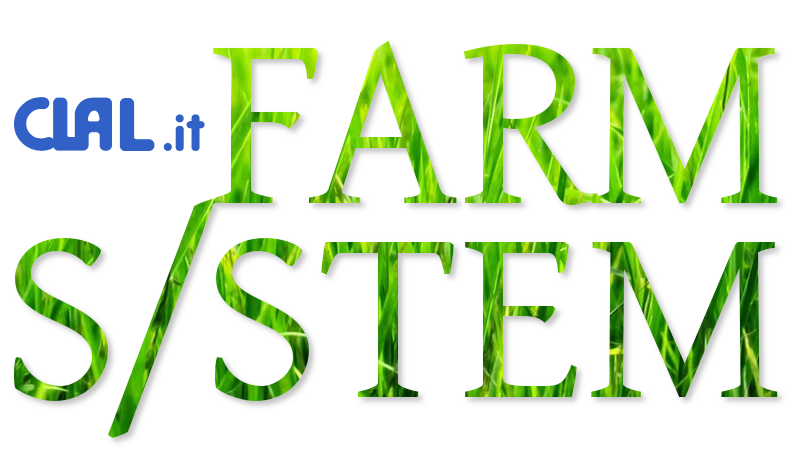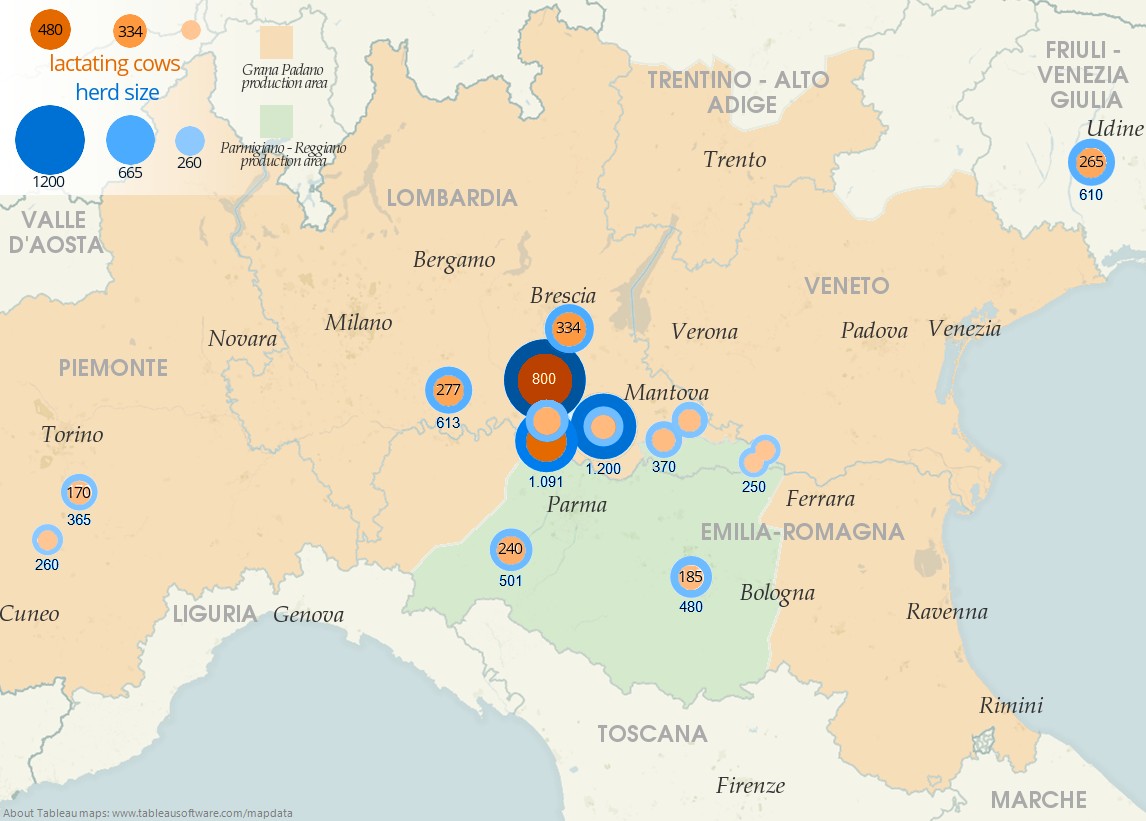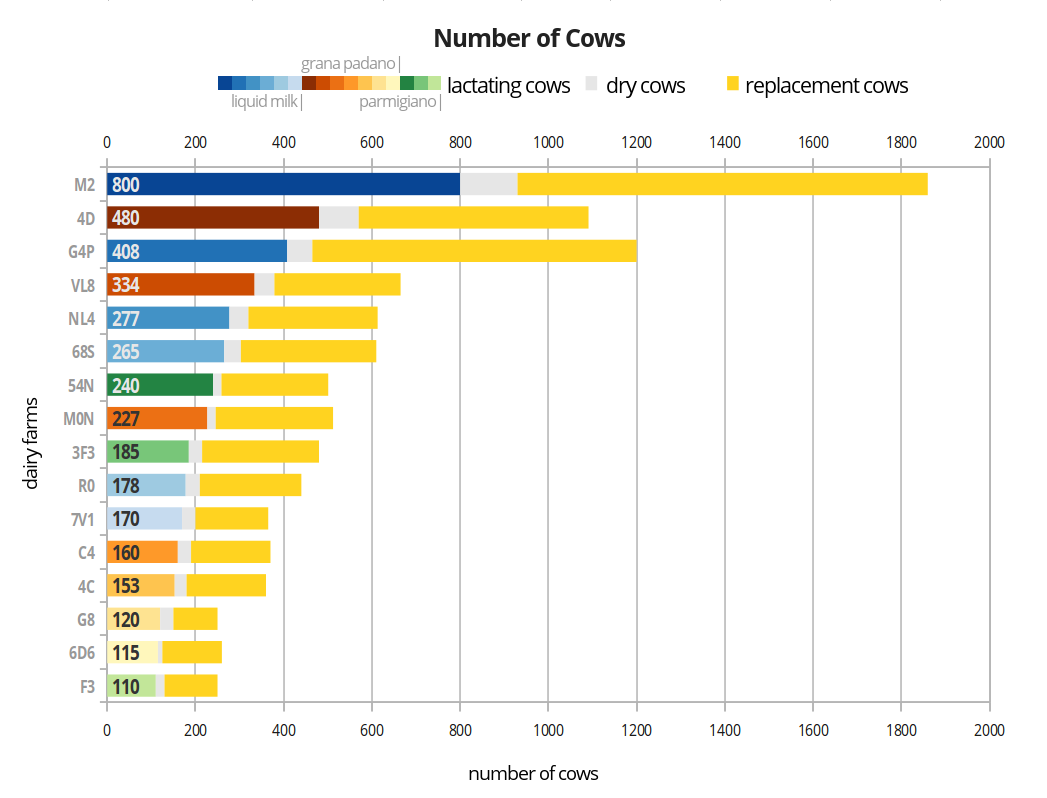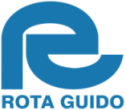Italy: Performance and Competitiveness of Italian Dairy Farms FARM S/STEM

Goal of the FARM S/STEM project is to assess the competitiveness of Italian dairy Farms. CLAL selected a group of dairy Farmers of Northern Italy having a special interest in performance analysis and costs and sent out its Team to assess the herd management on these Farms and to collect dairy farm data.
Dairy Farms in the project
The group of dairy Farms monitored in the project is not a representative sample of Italian farms but rather a
selection of farms having a special interest in performance analysis and costs.
The data displayed refer to the 2012 calendar year. Sixteen (16) dairy Farms of Northern Italy participate in the project;
these are shown on the map below with their respective herd size.

The bar chart below ranks the dairy Farms based on the number of lactating cows. The colour of the first horizontal bar, which measures the number of lactating cows, is based on the destination of the milk produced: blue for Liquid Milk, orange for the production of Grana Padano and green for the production of Parmigiano-Reggiano.

Israel 2011: 24.4 months
Source: The Israeli Herdbook 2011
| Country | Year | Milk per cow (tons) |
| Italy | 2022 | 79.77 |
| Germany | 2016 | 74.80 |
| France | 2016 | 66.48 |
| Ireland | 2016 | 49.01 |
| The Netherlands | 0.00 | |
| Poland | 2016 | 0.00 |
| Sources: EUROSTAT, AGEA, AIA | ||
RETURNS (2012) FARM S/STEM
Show/hide a detailed breakdown of the Returns considered.
- Sale of milk (quality premiums included)
- Cows sold for slaughter
- Sale of male calves
- Sale of heifers and other replacement animals
- Sale of agricultural products
- Income from photovoltaic energy production
- Income from biogas plant
- Revenues from CAP subsidies
- Revenues from other subsidies
of the market value of concentrated animal feed.
Il grafico sottostante permette di seguire l'evoluzione mensile del valore di mercato degli alimenti concentrati.
È rappresentato il valore dell'Alimento Simulato, un modello teorico di alimento che prevede
esclusivamente l'impiego di mais e farina di estrazione di soia 44 ('nazionale'); è stato assunto a modello in quanto i due
ingredienti che lo compongono sono driver del prezzo di tutte le materie prime disponibili sul mercato.
L'Alimento Simulato ha la seguente composizione:
| Corn meal | 70% | Raw proteins as fed | 19% |
| Soybean extraction meal 44% protein | 30% | Value in MFU | 1,05 |
The monthly price of the products corresponds to the average monthly quotation of the Commodities Exchange of the Milan Chamber of Commerce.
| Brent oil price and forecast | |||||
| 2012 | 2013 | 2014 | 2015 | 2016 | |
| USD/barrel | 111.7 | 108.7 | 105.2 | 100.7 | 101.9 |
| variation over time | -2.75% | -5.84% | -9.87% | -8.80% | |
| Dairy farm fuel, oil & ilubrificants cost: | |||||
| % sui ricavi totali | 4.02% | 3.91% | 3.79% | 3.62% | 3.67% |
| €/100kg of milk | 2.30 | 2.24 | 2.17 | 2.07 | 2.10 |
|
Source: data processed by Intesa Sanpaolo based on Bloomberg data at September 23, 2014 |
|||||
| Electric power price and forecast | ||||
| 2012 | 2013 | 2014 | 2015 | |
| price PUN €/Mwh | 75.53 | 63.00 | 52.00 | 51.00 |
| variation over time | -16.59% | -31.15% | -32.48% | |
| Dairy farm electric power cost: | ||||
| % sui ricavi totali | 2.23% | 1.86% | 1.54% | 1.51% |
| €/100kg of milk | 1.29 | 1.08 | 0.89 | 0.87 |
| Source: data processed by Intesa Sanpaolo based on GME data at November 7, 2014 | ||||
Performance of Dairy Farms
The new spider web chart allows to compare the performance of your dairy Farm with the performance of the dairy Farms participating in the project by entering your data in a simple form.
UE-27: Dairy Farm Structure
The charts below are a snapshot of the current structuring and herd size of dairy farms in some European countries.
Comparisons should be made based on the overall structure and not on absolute values (the scales in the various charts differ).
The second row of charts allows a comparison between the four most productive Italian Regions.
For any questions or comments please write to























































